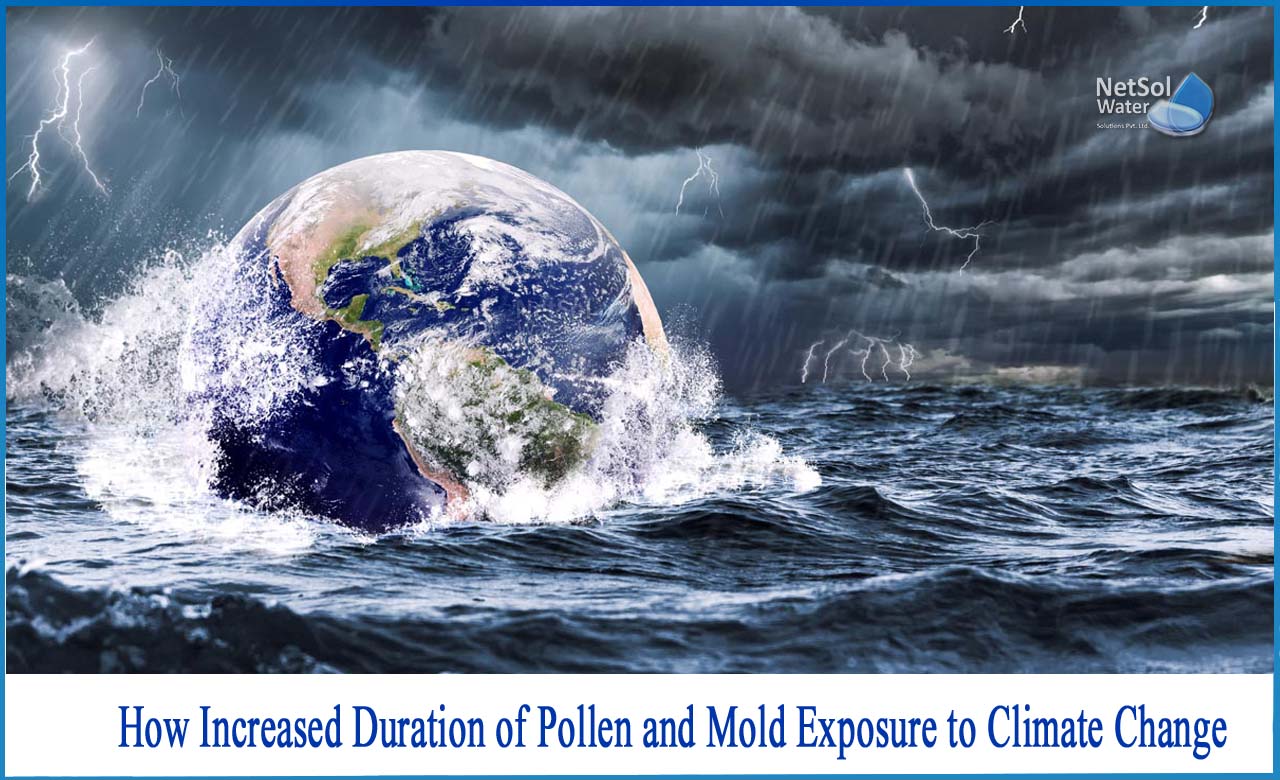How increased duration of pollen and mold exposure to Climate change?
Climate change, caused by increased human activity in recent decades, has a number of consequences for both planetary and human health. Human activity has resulted in increases in a variety of greenhouse gases, including carbon dioxide (CO2), methane (CH4), nitrous oxide (N2O), and ozone (O3). The global average temperature increased by about 1.0 °C and continues to rise.
Extreme weather events, such as increased flooding, wildfires, and thunderstorms, have increased as a result of climate change. Climate change has been linked to an increase in the risk of atopic diseases such as allergic rhinitis and allergic asthma, according to the Centers for Disease Control and Prevention.
Allergens are found in pollen from trees, grasses, and weeds, as well as mold spores.
Climate change is associated with changes in vegetation, increased pollen/mold spore concentrations, and longer pollen seasons. Climate change causes an increase in pollen/mold spores, which causes allergies and asthma; the effects of climate change on human health are well documented, particularly in the case of allergies. During thunderstorms, whole pollen grains are blown into the clouds, where they are broken down into smaller allergenic pollen fragments and eventually carried back to the ground. Because pollen fragments are smaller in size, they can enter deeper into the lungs.
Pollen and mold in the air contribute significantly to adverse health outcomes in allergy and asthma patients. Increased pollen counts in the spring are linked to an increase in over-the-counter allergy medication sales as well as an increase in emergency room visits for asthma exacerbations. Pollen and molds are major allergens that cause allergic rhino conjunctivitis and asthma flare-ups. Mold growth can cause respiratory and asthma-related conditions, as well as allergic bronchopulmonary aspergillosis, allergic fungal rhinosinusitis, and hypersensitivity pneumonitis as a result of increased rainfall and higher temperatures.
There is also growing evidence that climate change may be contributing to the rising incidence of food allergy through changes in the distribution of sensitizing plants and possibly through a direct change in the allergenicity of plants with rising CO2 levels. Because different patients are sensitive to varying levels of atmospheric allergens, it is critical to understand how pollen and mold activity changes over time. Patients who are sensitive to even trace amounts of pollen and mold spores may benefit from understanding their activities and peak allergy seasons, as well as how they vary with climate change.
Mold and allergens from trees, weeds, and grass are also carried in the air, exacerbated by climate change, and can be harmful to one's health. They can be considered a form of air pollution, despite the fact that they are not regulated and are less directly related to human actions. Mold can grow in water-damaged homes, schools, and businesses, producing allergenic airborne pollutants. Mold exposure can trigger asthma attacks or an allergic reaction, and some molds can even produce toxins that are dangerous to inhale.
Conclusion
Climate change also lengthens the pollen season, and some research suggests that ragweed pollen may be becoming a more potent allergen. If this happens, more people will experience runny noses, fevers, itchy eyes, and other symptoms.
Netsol Water is Greater Noida-based leading water & wastewater treatment plant manufacturer. We are industry's most demanding company based on client review and work quality. We are known as best commercial RO plant manufacturers, industrial RO plant manufacturer, sewage treatment plant manufacturer, Water Softener Plant Manufacturers and effluent treatment plant manufacturers. Apart from this 24x7 customer support is our USP. Call on +91-9650608473, or write us at enquiry@netsolwater.com for any support, inquiry or product-purchase related query.



